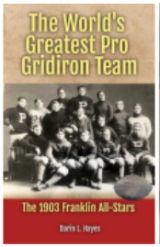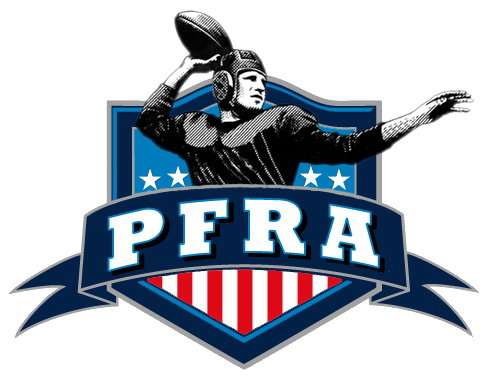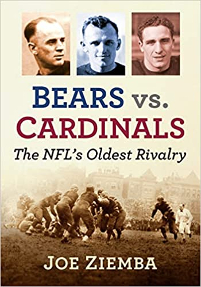Soaring with Grace from the Steel City
Lynn Swann played for the Pittsburgh Steelers and was Super Bowl MVP wearing Number 88. and Part of the success of the 1970s Pittsburgh Steelers.
Swann's legacy transcends the gridiron. He wasn't just a gifted wide receiver; he was a ballet dancer in cleats, a symbol of elegance amidst the ferocious Steelers dynasty of the 1970s.
Swann's journey began at USC, where his athleticism and leaping ability shone brightly. Drafted by the Pittsburgh Steelers in 1973, he joined the legendary "Steel Curtain" defense, adding an unexpected aerial dimension to their dominant force.
Partnered with the "Blonde Bomber" Terry Bradshaw, Swann became a maestro of acrobatic catches. His leaping touchdown in Super Bowl IX, leaping over Cowboys defenders like a gazelle, remains an iconic image etched in football history. His grace and precision defied the brutality of the sport, earning him the nickname "Swan."
Beyond highlights, Swann's impact was profound. He formed a near-telepathic connection with Bradshaw, reading blitzes and anticipating throws with uncanny intuition. He helped the Steelers secure four Super Bowl victories in six years, his calm presence and unflappable demeanor a key component of their dynasty.
Tragically, Swann's career was cut short by injuries in 1983. But his influence extended beyond the field. He pursued a successful broadcasting career, his eloquent insights and analytical mind finding a new audience. He also actively promoted literacy and education, proving his brilliance extended far beyond the football field.
Swann's legacy transcends the gridiron. He wasn't just a gifted wide receiver; he was a ballet dancer in cleats, a symbol of elegance amidst the ferocious Steelers dynasty of the 1970s.
Swann's journey began at USC, where his athleticism and leaping ability shone brightly. Drafted by the Pittsburgh Steelers in 1973, he joined the legendary "Steel Curtain" defense, adding an unexpected aerial dimension to their dominant force.
Partnered with the "Blonde Bomber" Terry Bradshaw, Swann became a maestro of acrobatic catches. His leaping touchdown in Super Bowl IX, leaping over Cowboys defenders like a gazelle, remains an iconic image etched in football history. His grace and precision defied the brutality of the sport, earning him the nickname "Swan."
Beyond highlights, Swann's impact was profound. He formed a near-telepathic connection with Bradshaw, reading blitzes and anticipating throws with uncanny intuition. He helped the Steelers secure four Super Bowl victories in six years, his calm presence and unflappable demeanor a key component of their dynasty.
Tragically, Swann's career was cut short by injuries in 1983. But his influence extended beyond the field. He pursued a successful broadcasting career, his eloquent insights and analytical mind finding a new audience. He also actively promoted literacy and education, proving his brilliance extended far beyond the football field.
Famous NFL Players That Wore the Jersey Number 88
In the ever-evolving landscape of professional football, certain numbers transcend individual players, becoming symbols of excellence and a testament to the enduring legacy of the game. Among these iconic digits, none resonates more with fans than the storied number 88. From Hall of Fame tight ends to dynamic wide receivers, a lineage of exceptional athletes have graced the gridiron while donning this revered number.
This series will delve into the rich history of number 88 in the NFL, exploring the remarkable careers of the players who have worn it with distinction. We'll examine their contributions to the game, their impact on their teams, and the indelible marks they have left on football history.
Join us as we embark on a journey through the annals of NFL greatness, celebrating the legendary players who have made number 88 a symbol of dominance, athleticism, and unwavering dedication.
This series will delve into the rich history of number 88 in the NFL, exploring the remarkable careers of the players who have worn it with distinction. We'll examine their contributions to the game, their impact on their teams, and the indelible marks they have left on football history.
Join us as we embark on a journey through the annals of NFL greatness, celebrating the legendary players who have made number 88 a symbol of dominance, athleticism, and unwavering dedication.
COLLEGE HOF | ‣
George Wildcat Wilson & His Wild Football Career
George "Wildcat" Wilson, a name synonymous with football excellence, left an indelible mark on both the collegiate and professional levels of the game. Born September 6, 1901, George Wilson or Wildcat Wilson, was a halfback from the University of Washington.
Wildcat showed his importance to the the Huskies team in the 1926 Rose Bowl Game. Wilson's dominant performance for much of the first half of the "Grand Daddy of them All" had opponent Alabama on their heels and down by a couple of scores. The Crimson Tide finally got a break late in the second quarter when George Wilson left the game due to injury. The Tide led by Johnny Mack Brown with 20 unanswered points and were driving down the field to score again when the banged up Wildcat Wilson re-entered the contest and was significant in stalling the 'Bama drive at the Husky 12 yard line.
Wilson then guided the Washington offense down the field and capped off the drive with Wilson throwing a 20 yard scoring strike to John Cole. It was not enough as the Tide held ont win the game 20-19. The stat line of the game showed that with Wilson on the field, the Washington Huskies gained 317 yards and put up 19 points, when he was out they mustered a mere 17 yards and were shut out while the Crimson Tide scored all 20 of their points in that 22 minute absence of Wilson from the contest.
It really put Alabama football on the map as a prominant football power in the college football landscape. The 1926 Rose Bowl has gone down in history known as "The game that changed the South." but it could have been a much different game had Wildcat Wilson played the whole game. Needless to say, the College Football Hall of Fame invited George Wilson into their exclusive club of legends in 1951.
His versatile skills and electrifying performances solidified his status as one of the most iconic players of his era.
Wilson's collegiate career at the University of Washington was nothing short of extraordinary. As a halfback, he displayed a remarkable combination of speed, power, and agility. His ability to evade defenders, break tackles, and score touchdowns consistently made him a nightmare for opposing teams. Wilson's impact on the Huskies was undeniable, as he led them to numerous victories and earned consensus All-American honors.
After his successful college career, Wilson transitioned to the professional ranks, where he continued to impress. His most notable stint was with the Los Angeles Wildcats. Despite the challenges of the early days of professional football, Wilson's talent and determination shone through. He became a fan favorite and a respected figure among his peers.
Beyond his on-field accomplishments, Wilson's legacy extends to his impact on the sport as a whole. His dynamic playing style and fearless approach to the game inspired countless athletes and fans alike. His contributions to the development of football, both at the collegiate and professional levels, continue to be celebrated and admired.
George "Wildcat" Wilson's name will forever be etched in the annals of football history. His exceptional talent, unwavering dedication, and enduring impact on the sport make him a true legend.
Wildcat showed his importance to the the Huskies team in the 1926 Rose Bowl Game. Wilson's dominant performance for much of the first half of the "Grand Daddy of them All" had opponent Alabama on their heels and down by a couple of scores. The Crimson Tide finally got a break late in the second quarter when George Wilson left the game due to injury. The Tide led by Johnny Mack Brown with 20 unanswered points and were driving down the field to score again when the banged up Wildcat Wilson re-entered the contest and was significant in stalling the 'Bama drive at the Husky 12 yard line.
Wilson then guided the Washington offense down the field and capped off the drive with Wilson throwing a 20 yard scoring strike to John Cole. It was not enough as the Tide held ont win the game 20-19. The stat line of the game showed that with Wilson on the field, the Washington Huskies gained 317 yards and put up 19 points, when he was out they mustered a mere 17 yards and were shut out while the Crimson Tide scored all 20 of their points in that 22 minute absence of Wilson from the contest.
It really put Alabama football on the map as a prominant football power in the college football landscape. The 1926 Rose Bowl has gone down in history known as "The game that changed the South." but it could have been a much different game had Wildcat Wilson played the whole game. Needless to say, the College Football Hall of Fame invited George Wilson into their exclusive club of legends in 1951.
His versatile skills and electrifying performances solidified his status as one of the most iconic players of his era.
Wilson's collegiate career at the University of Washington was nothing short of extraordinary. As a halfback, he displayed a remarkable combination of speed, power, and agility. His ability to evade defenders, break tackles, and score touchdowns consistently made him a nightmare for opposing teams. Wilson's impact on the Huskies was undeniable, as he led them to numerous victories and earned consensus All-American honors.
After his successful college career, Wilson transitioned to the professional ranks, where he continued to impress. His most notable stint was with the Los Angeles Wildcats. Despite the challenges of the early days of professional football, Wilson's talent and determination shone through. He became a fan favorite and a respected figure among his peers.
Beyond his on-field accomplishments, Wilson's legacy extends to his impact on the sport as a whole. His dynamic playing style and fearless approach to the game inspired countless athletes and fans alike. His contributions to the development of football, both at the collegiate and professional levels, continue to be celebrated and admired.
George "Wildcat" Wilson's name will forever be etched in the annals of football history. His exceptional talent, unwavering dedication, and enduring impact on the sport make him a true legend.
Alan Page
Born August 7, 1945, in Canton, Ohio, was Alan Page was a defensive end from Notre Dame that was selected to enter the College Football Hall of Fame. He was a member of that famed 1966 Fighting Irish National Championship team.
Mr. Page went on to have a tremendous 15 year pro career as part of the famed Purple People Eaters of the Minnesota Vikings and later 3 seasons with the Chicago Bears. In 1967 he won the NFL Rookie of the Year honors.
As a Viking, Alan played in four Super Bowls (IV, VIII, IX, XI), but unfortunately never got a chance to hoist the Lombardi Trophy. Page was named to the 1970s NFL All-Decade Team, inducted into the Vikings Ring of Honor
The great defender also has his bronze bust placed in Canton in the Pro Football Hall of Fame. Page was the first player on the defensive side of the ball to win the NFL MVP honors, and only Lawrence Taylor has done it since!
What does a super-intelligent football player do after a brilliant career? Well, according to Yahoo.com, Page attended the University of Minnesota Law School while still playing for the Vikings and earned his law degree in 1978. The man then served as a Minnesota Supreme Court Associate Justice from 1992-2015. Incredible!
Mr. Page went on to have a tremendous 15 year pro career as part of the famed Purple People Eaters of the Minnesota Vikings and later 3 seasons with the Chicago Bears. In 1967 he won the NFL Rookie of the Year honors.
As a Viking, Alan played in four Super Bowls (IV, VIII, IX, XI), but unfortunately never got a chance to hoist the Lombardi Trophy. Page was named to the 1970s NFL All-Decade Team, inducted into the Vikings Ring of Honor
The great defender also has his bronze bust placed in Canton in the Pro Football Hall of Fame. Page was the first player on the defensive side of the ball to win the NFL MVP honors, and only Lawrence Taylor has done it since!
What does a super-intelligent football player do after a brilliant career? Well, according to Yahoo.com, Page attended the University of Minnesota Law School while still playing for the Vikings and earned his law degree in 1978. The man then served as a Minnesota Supreme Court Associate Justice from 1992-2015. Incredible!
Retired Jersey Numbers of the Arizona Cardinals
The Arizona Cardinals, one of the NFL's oldest franchises, have a relatively small but distinguished list of retired jerseys. This exclusive honor is reserved for players who have made extraordinary contributions to the team. Larry Wilson, a legendary safety known for his defensive prowess, holds the distinction of being the only single-digit number retired by the Cardinals. Other honorees include Pat Tillman, a beloved figure whose sacrifice continues to inspire, and offensive standouts like Stan Mauldin, J.V. Cain, and Marshall Goldberg.
These jerseys, removed from circulation, serve as enduring tributes to the legacies of these exceptional athletes.
Here is the complete list for the franchise:
-Jersey Number 8
Larry Wilson
-Jersey Number 40
Pat Tillman
-Jersey Number 77
Stan Mauldin
-Jersey Number 88
J. V. Cain
-Jersey Number 99
Marshall Goldberg
*Note 99 was brought out of retirement with permission from Goldberg's family for J.J. Watt to wear it.
If you love football jersey designs and evolution, wait until you check out the History of American Football Jersey.
-Football Jersey Frequently Asked Questions
-What are American football jerseys made of? Modern jerseys are made of synthetic fibers such as polyester or a blend of different materials such as spandex. For more, check out our in-depth study of The Makeup and Materials of Football Jerseys.
-Whose college football jersey was the first to be retired? Red Grange's Number 77 Ilinois Illini jersey was the first college uni shelved in 1925. There were a couple more about the same time, and we chatted with a college football expert historian to help divulge College Football and its First Retired Jerseys.
-When did football jerseys start having numbers on them? Though there was documented talk of it since 1894, players only wore digits in a 1905 Iowa State at Drake game. Check out more on this story The Origins Of Football Player Numbers.
-Who are some of the most famous NFL players at each jersey number? From Red Grange's jersey number 77 to Tom Brady's iconic number 12, several NFL players made their digits proud. Want to know more? You are in the right place, as we covered all 100 jersey numbers, and the best way to wear each is About Football By Numbers.
These jerseys, removed from circulation, serve as enduring tributes to the legacies of these exceptional athletes.
Here is the complete list for the franchise:
-Jersey Number 8
Larry Wilson
-Jersey Number 40
Pat Tillman
-Jersey Number 77
Stan Mauldin
-Jersey Number 88
J. V. Cain
-Jersey Number 99
Marshall Goldberg
*Note 99 was brought out of retirement with permission from Goldberg's family for J.J. Watt to wear it.
If you love football jersey designs and evolution, wait until you check out the History of American Football Jersey.
-Football Jersey Frequently Asked Questions
-What are American football jerseys made of? Modern jerseys are made of synthetic fibers such as polyester or a blend of different materials such as spandex. For more, check out our in-depth study of The Makeup and Materials of Football Jerseys.
-Whose college football jersey was the first to be retired? Red Grange's Number 77 Ilinois Illini jersey was the first college uni shelved in 1925. There were a couple more about the same time, and we chatted with a college football expert historian to help divulge College Football and its First Retired Jerseys.
-When did football jerseys start having numbers on them? Though there was documented talk of it since 1894, players only wore digits in a 1905 Iowa State at Drake game. Check out more on this story The Origins Of Football Player Numbers.
-Who are some of the most famous NFL players at each jersey number? From Red Grange's jersey number 77 to Tom Brady's iconic number 12, several NFL players made their digits proud. Want to know more? You are in the right place, as we covered all 100 jersey numbers, and the best way to wear each is About Football By Numbers.
Lynn Swann Super Bowl MVP along with Pro and College Football Hall of Fame Wide Receiver
Born March 7, 1952, in Alcoa, Tennessee, was the graceful pass-catching wide out of the USC Trojans of the early 1970, Lynn Swann.
Swann forged a remarkable career as a wide receiver, leaving an indelible mark on college and professional football.
-College Career
Swann's collegiate journey unfolded at the University of Southern California (USC), where he became a key component of the Trojans' potent offense. Under the guidance of legendary coach John McKay, he showcased his exceptional athleticism, leaping ability, and sure hands. He was vital to USC's success in the early 1970s, contributing to their national championship victories. His graceful style and clutch performances made him a favorite and a highly regarded player.
-Road to the Pro Game
Swann's outstanding college career led to his selection in the first round (13th overall) of the 1974 NFL Draft by the Pittsburgh Steelers. He spent his entire professional career with the Steelers, becoming a key figure in their dominant era of the 1970s.
-Football Legacy
Lynn Swann's football legacy is defined by his crucial role in the Pittsburgh Steelers' "Steel Curtain" dynasty. He was a key target for quarterback Terry Bradshaw, known for his acrobatic catches and ability to make big plays in crucial moments. He was vital to the Steelers' four Super Bowl victories (IX, X, XIII, and XIV). His performance in Super Bowl X, where he made several spectacular catches, including a leaping 53-yard reception, earned him the Super Bowl MVP award. He was known for his graceful style, intelligence, and clutch performances. He was inducted into the Pro Football Hall of Fame in 2001.
-Accolades, Awards and Career Stats
-4× Super Bowl champion (IX, X, XIII, XIV)
-Super Bowl X MVP
-3× Pro Bowl (1975–1977)
-3× Second-team All-Pro (1975–1977)
-NFL 1970s All-Decade Team
-Pittsburgh Steelers All-Time Team
-College Football Hall of Fame inductee (1993)
-Pro Football Hall of Fame inductee (2001)
-Receptions: 336
-Receiving yards: 5,462
-Receiving touchdowns: 51
-Career NFL statistics
Receptions: 336
Receiving yards: 5,462
Receiving touchdowns: 51
Stats at Pro-Football-Reference.com
Lynn Swann's combination of athleticism, grace, and clutch performances cemented his place among the NFL's greatest wide receivers and solidified his legacy as a key figure in the Pittsburgh Steelers' storied history.
Swann forged a remarkable career as a wide receiver, leaving an indelible mark on college and professional football.
-College Career
Swann's collegiate journey unfolded at the University of Southern California (USC), where he became a key component of the Trojans' potent offense. Under the guidance of legendary coach John McKay, he showcased his exceptional athleticism, leaping ability, and sure hands. He was vital to USC's success in the early 1970s, contributing to their national championship victories. His graceful style and clutch performances made him a favorite and a highly regarded player.
-Road to the Pro Game
Swann's outstanding college career led to his selection in the first round (13th overall) of the 1974 NFL Draft by the Pittsburgh Steelers. He spent his entire professional career with the Steelers, becoming a key figure in their dominant era of the 1970s.
-Football Legacy
Lynn Swann's football legacy is defined by his crucial role in the Pittsburgh Steelers' "Steel Curtain" dynasty. He was a key target for quarterback Terry Bradshaw, known for his acrobatic catches and ability to make big plays in crucial moments. He was vital to the Steelers' four Super Bowl victories (IX, X, XIII, and XIV). His performance in Super Bowl X, where he made several spectacular catches, including a leaping 53-yard reception, earned him the Super Bowl MVP award. He was known for his graceful style, intelligence, and clutch performances. He was inducted into the Pro Football Hall of Fame in 2001.
-Accolades, Awards and Career Stats
-4× Super Bowl champion (IX, X, XIII, XIV)
-Super Bowl X MVP
-3× Pro Bowl (1975–1977)
-3× Second-team All-Pro (1975–1977)
-NFL 1970s All-Decade Team
-Pittsburgh Steelers All-Time Team
-College Football Hall of Fame inductee (1993)
-Pro Football Hall of Fame inductee (2001)
-Receptions: 336
-Receiving yards: 5,462
-Receiving touchdowns: 51
-Career NFL statistics
Receptions: 336
Receiving yards: 5,462
Receiving touchdowns: 51
Stats at Pro-Football-Reference.com
Lynn Swann's combination of athleticism, grace, and clutch performances cemented his place among the NFL's greatest wide receivers and solidified his legacy as a key figure in the Pittsburgh Steelers' storied history.
Michael Irvin The Hall of Fame Playmaker
Michael Irvin, born on March 5, 1966, in Fort Lauderdale, Florida, forged a legendary career as a wide receiver, leaving an enduring impact on football.
Image credit goes to Super Bowl-1-2 Michael Irvin 2012 by Stephen Luke via Wikimedia Commons.
The “Playmaker” Michael Irvin, who caught passes as a wide receiver for the Miami Hurricanes in the mid 1980s, arrived into this world. Michael was the first round pick of the Dallas Cowboys in the 1988 NFL Draft.
-College Career
-Irvin showcased his exceptional talent at the University of Miami, where he played for the Hurricanes.
-He was a key component of the Hurricanes' 1987 national championship team.
-His dynamic playmaking ability and toughness made him a standout receiver during his collegiate years.
-Road to the Pro Game
-Irvin's impressive college performance led to him being drafted in the first round (11th overall) of the 1988 NFL Draft by the Dallas Cowboys.
-He would spend his entire professional career with the Dallas Cowboys.
-Football Legacy
-Michael Irvin was a vital part of the Dallas Cowboys' dominant teams of the 1990s, contributing to three Super Bowl victories (XXVII, XXVIII, and XXX).
-Known for his passion and competitiveness, he earned the nickname "The Playmaker."
-He was a crucial part of the "triplets" with Troy Aikman and Emmitt Smith.
-His legacy is that of a tough, competitive, and highly skilled wide receiver.
-He was inducted into the Pro Football Hall of Fame in 2007.
-Accolades, Awards and Career Stats
-3× Super Bowl champion (XXVII, XXVIII, XXX)
-5× Pro Bowl (1991–1995)
-First-team All-Pro (1991)
-2× Second-team All-Pro (1992, 1993)
-NFL receiving yards leader (1991)
-NFL 1990s All-Decade Team
-Dallas Cowboys Ring of Honor
-National champion (1987)
-Pro Football Hall of Fame Inductee (2007)
-Receptions: 750
-Receiving yards: 11,904
-Receiving touchdowns: 65
Michael Irvin's combination of talent, drive, and on-field presence solidified his place among the NFL's greatest wide receivers.
Also include any accolades, awards and career stats this player accomplished
Image credit goes to Super Bowl-1-2 Michael Irvin 2012 by Stephen Luke via Wikimedia Commons.
The “Playmaker” Michael Irvin, who caught passes as a wide receiver for the Miami Hurricanes in the mid 1980s, arrived into this world. Michael was the first round pick of the Dallas Cowboys in the 1988 NFL Draft.
-College Career
-Irvin showcased his exceptional talent at the University of Miami, where he played for the Hurricanes.
-He was a key component of the Hurricanes' 1987 national championship team.
-His dynamic playmaking ability and toughness made him a standout receiver during his collegiate years.
-Road to the Pro Game
-Irvin's impressive college performance led to him being drafted in the first round (11th overall) of the 1988 NFL Draft by the Dallas Cowboys.
-He would spend his entire professional career with the Dallas Cowboys.
-Football Legacy
-Michael Irvin was a vital part of the Dallas Cowboys' dominant teams of the 1990s, contributing to three Super Bowl victories (XXVII, XXVIII, and XXX).
-Known for his passion and competitiveness, he earned the nickname "The Playmaker."
-He was a crucial part of the "triplets" with Troy Aikman and Emmitt Smith.
-His legacy is that of a tough, competitive, and highly skilled wide receiver.
-He was inducted into the Pro Football Hall of Fame in 2007.
-Accolades, Awards and Career Stats
-3× Super Bowl champion (XXVII, XXVIII, XXX)
-5× Pro Bowl (1991–1995)
-First-team All-Pro (1991)
-2× Second-team All-Pro (1992, 1993)
-NFL receiving yards leader (1991)
-NFL 1990s All-Decade Team
-Dallas Cowboys Ring of Honor
-National champion (1987)
-Pro Football Hall of Fame Inductee (2007)
-Receptions: 750
-Receiving yards: 11,904
-Receiving touchdowns: 65
Michael Irvin's combination of talent, drive, and on-field presence solidified his place among the NFL's greatest wide receivers.
Also include any accolades, awards and career stats this player accomplished
Tony Gonzalez The Model for Future Tight Ends
Tony Gonzalez, born on February 27, 1976, in Torrance, California, stands as one of the most prolific tight ends in NFL history. His exceptional athleticism and unwavering dedication forged a career that redefined the position.
-College Career
-Gonzalez's collegiate journey took place at the University of California, Berkeley, where he excelled in both football and basketball.
-As a member of the California Golden Bears football team, he showcased his remarkable receiving abilities, foreshadowing his future NFL dominance.
-His combination of size, speed, and hands made him a standout player.
-Road to the Pro Game
-Tony Gonzalez was selected by the Kansas City Chiefs in the first round (13th overall) of the 1997 NFL Draft.
-This marked the beginning of a legendary professional career that would span 17 seasons.
-He would go on to also play for the Atlanta Falcons.
-Football Legacy
-Tony Gonzalez's legacy is defined by his unparalleled consistency and durability.
-He revolutionized the tight end position, proving that it could be a primary receiving threat.
-His record-breaking statistics and numerous accolades have solidified his place as one of the greatest tight ends of all time.
-He is known for his reliable hands, and his ability to make tough catches.
-He is a member of the Pro Football Hall of Fame.
-Accolades, Awards and Career Stats
-Pro Football Hall of Fame inductee.
-14× Pro Bowl selection.
-6× First-team All-Pro selection.
-NFL 2000s All-Decade Team.
-NFL 100th Anniversary All-Time Team.
-NFL receptions leader (2004).
-Career NFL statistics:
-Receptions: 1,325.
-Receiving yards: 15,127.
-Receiving touchdowns: 111.
Tony Gonzalez's impact on the NFL extends beyond his impressive statistics. He set a new standard for tight end play, inspiring future generations of athletes.
-College Career
-Gonzalez's collegiate journey took place at the University of California, Berkeley, where he excelled in both football and basketball.
-As a member of the California Golden Bears football team, he showcased his remarkable receiving abilities, foreshadowing his future NFL dominance.
-His combination of size, speed, and hands made him a standout player.
-Road to the Pro Game
-Tony Gonzalez was selected by the Kansas City Chiefs in the first round (13th overall) of the 1997 NFL Draft.
-This marked the beginning of a legendary professional career that would span 17 seasons.
-He would go on to also play for the Atlanta Falcons.
-Football Legacy
-Tony Gonzalez's legacy is defined by his unparalleled consistency and durability.
-He revolutionized the tight end position, proving that it could be a primary receiving threat.
-His record-breaking statistics and numerous accolades have solidified his place as one of the greatest tight ends of all time.
-He is known for his reliable hands, and his ability to make tough catches.
-He is a member of the Pro Football Hall of Fame.
-Accolades, Awards and Career Stats
-Pro Football Hall of Fame inductee.
-14× Pro Bowl selection.
-6× First-team All-Pro selection.
-NFL 2000s All-Decade Team.
-NFL 100th Anniversary All-Time Team.
-NFL receptions leader (2004).
-Career NFL statistics:
-Receptions: 1,325.
-Receiving yards: 15,127.
-Receiving touchdowns: 111.
Tony Gonzalez's impact on the NFL extends beyond his impressive statistics. He set a new standard for tight end play, inspiring future generations of athletes.
Chris Carter Hall of Fame Receiver
Born November 25, 1965, in Troy, Ohio, Cris Carter's football journey, marked by challenges and triumphs, culminated in a Hall of Fame career. His exceptional talent and unwavering dedication solidified his place as one of the NFL's most excellent receivers.
-College Career
Carter's collegiate career at Ohio State University showcased his natural talent. He was a key part of the Buckeyes' offense, demonstrating his exceptional hands and route-running ability. However, his college career was also marked by off-field issues, ultimately leading to his early departure from the program.
-Road to the Pro Game
Despite the challenges, Carter's talent was undeniable. The Philadelphia Eagles selected him in the fourth round of the 1987 NFL Supplemental Draft. However, his career blossomed after joining the Minnesota Vikings in 1990.
-Football Legacy
Carter's tenure with the Vikings defined his career. He became a prolific receiver, known for his incredible hands, precise route running, and ability to make clutch catches. He formed a dynamic partnership with quarterback Randall Cunningham and later with Brad Johnson and Daunte Culpepper, becoming one of the most reliable targets in the NFL. His ability to catch nearly everything thrown his way earned him the nickname "Cris Carter, he makes the catch." Beyond his on-field performance, Carter was a respected leader and a mentor to younger players.
-Accolades, Awards and Career Stats
-Pro Football Hall of Fame Inductee (2013)
-8x Pro Bowl selection
-2x First-team All-Pro
-NFL 1990s All-Decade Team
Career Stats:
-1,101 receptions
-13,899 receiving yards
-130 touchdowns
Cris Carter's legacy extends beyond his impressive statistics. He overcame adversity, demonstrating resilience and dedication. He became a role model for countless athletes, proving that with hard work and determination, even the greatest challenges can be overcome.
-College Career
Carter's collegiate career at Ohio State University showcased his natural talent. He was a key part of the Buckeyes' offense, demonstrating his exceptional hands and route-running ability. However, his college career was also marked by off-field issues, ultimately leading to his early departure from the program.
-Road to the Pro Game
Despite the challenges, Carter's talent was undeniable. The Philadelphia Eagles selected him in the fourth round of the 1987 NFL Supplemental Draft. However, his career blossomed after joining the Minnesota Vikings in 1990.
-Football Legacy
Carter's tenure with the Vikings defined his career. He became a prolific receiver, known for his incredible hands, precise route running, and ability to make clutch catches. He formed a dynamic partnership with quarterback Randall Cunningham and later with Brad Johnson and Daunte Culpepper, becoming one of the most reliable targets in the NFL. His ability to catch nearly everything thrown his way earned him the nickname "Cris Carter, he makes the catch." Beyond his on-field performance, Carter was a respected leader and a mentor to younger players.
-Accolades, Awards and Career Stats
-Pro Football Hall of Fame Inductee (2013)
-8x Pro Bowl selection
-2x First-team All-Pro
-NFL 1990s All-Decade Team
Career Stats:
-1,101 receptions
-13,899 receiving yards
-130 touchdowns
Cris Carter's legacy extends beyond his impressive statistics. He overcame adversity, demonstrating resilience and dedication. He became a role model for countless athletes, proving that with hard work and determination, even the greatest challenges can be overcome.
Mac Speedie Cleveland Browns HOF End
Mac Speedie, a name lost to the mists of football history, deserves a moment under the Friday night lights. Born in 1920 in rural Illinois, Speedie overcame a childhood disability to become a dominant wide receiver in the early days of the NFL. His story is of athletic prowess, defying stereotypes, and leaving an indelible mark on the game he loved.
Speedie's early life was shaped by hardship. Struck by Perthes disease, a bone deficiency, he was initially told he might never walk again. However, fueled by an unwavering determination, Speedie recovered and excelled in athletics. He became a star sprinter in high school and at the University of Utah, even showcasing his talents on the basketball court and football field.
Despite doubts about his size and injury history, Speedie was drafted by the Detroit Lions in 1942. However, World War II intervened, and his professional career began not in the Motor City but with the Cleveland Browns of the upstart All-America Football Conference (AAFC).
It was with the Browns that Speedie's legend truly blossomed. Despite playing opposite Otto Graham, one of the greatest quarterbacks ever, Speedie became the AAFC's all-time leader in receptions and receiving yards. His deceptive routes, exceptional catching ability, and surprising speed earned him the nickname "The Flea" and made him a nightmare for opposing defenses.
When the AAFC merged with the NFL in 1950, Speedie proved he could compete against the established stars of the league. He led the Browns to the NFL Championship in 1950 and continued to dominate throughout the decade, earning All-Pro honors on multiple occasions.
Speedie's career ended in 1952 after a knee injury forced him into early retirement. He left behind a legacy of broken records, highlight-reel catches, and a reputation as one of the most complete receivers of his era.
Speedie's early life was shaped by hardship. Struck by Perthes disease, a bone deficiency, he was initially told he might never walk again. However, fueled by an unwavering determination, Speedie recovered and excelled in athletics. He became a star sprinter in high school and at the University of Utah, even showcasing his talents on the basketball court and football field.
Despite doubts about his size and injury history, Speedie was drafted by the Detroit Lions in 1942. However, World War II intervened, and his professional career began not in the Motor City but with the Cleveland Browns of the upstart All-America Football Conference (AAFC).
It was with the Browns that Speedie's legend truly blossomed. Despite playing opposite Otto Graham, one of the greatest quarterbacks ever, Speedie became the AAFC's all-time leader in receptions and receiving yards. His deceptive routes, exceptional catching ability, and surprising speed earned him the nickname "The Flea" and made him a nightmare for opposing defenses.
When the AAFC merged with the NFL in 1950, Speedie proved he could compete against the established stars of the league. He led the Browns to the NFL Championship in 1950 and continued to dominate throughout the decade, earning All-Pro honors on multiple occasions.
Speedie's career ended in 1952 after a knee injury forced him into early retirement. He left behind a legacy of broken records, highlight-reel catches, and a reputation as one of the most complete receivers of his era.
Related Titles
JOHN MACKEY, LYNN SWANNRelated Categories
FOOTBALL HALL OF FAME, FOOTBALL BY NUMBERS, COLLEGE HOFRelated Searches
NFL Jersey:Number 88, altcategory:College HOF, altcategory:Football Legend, NCAAF Jersey:Number 33, NFL Jersey:Number 33, sports:football, sports:pro football, NFL Jersey:Number 82, NFL Jersey:Number 08, NFL Jersey:Number 40, NFL Number:Jersey 99, NFL Jersey:Number 77, NCAAF Jersey:Number 22, NCAAF Jersey:Number 47, NCAAF Jersey:Number 44, NCAAF Jersey:Number 02, NFL Jersey:Number 80, Sports:football, NFL Jersey:Number 58, NFL Jersey:Number 89, NFL Jersey:Number 10, NFL Jersey:Number 53, NFL Jersey:Number 70









